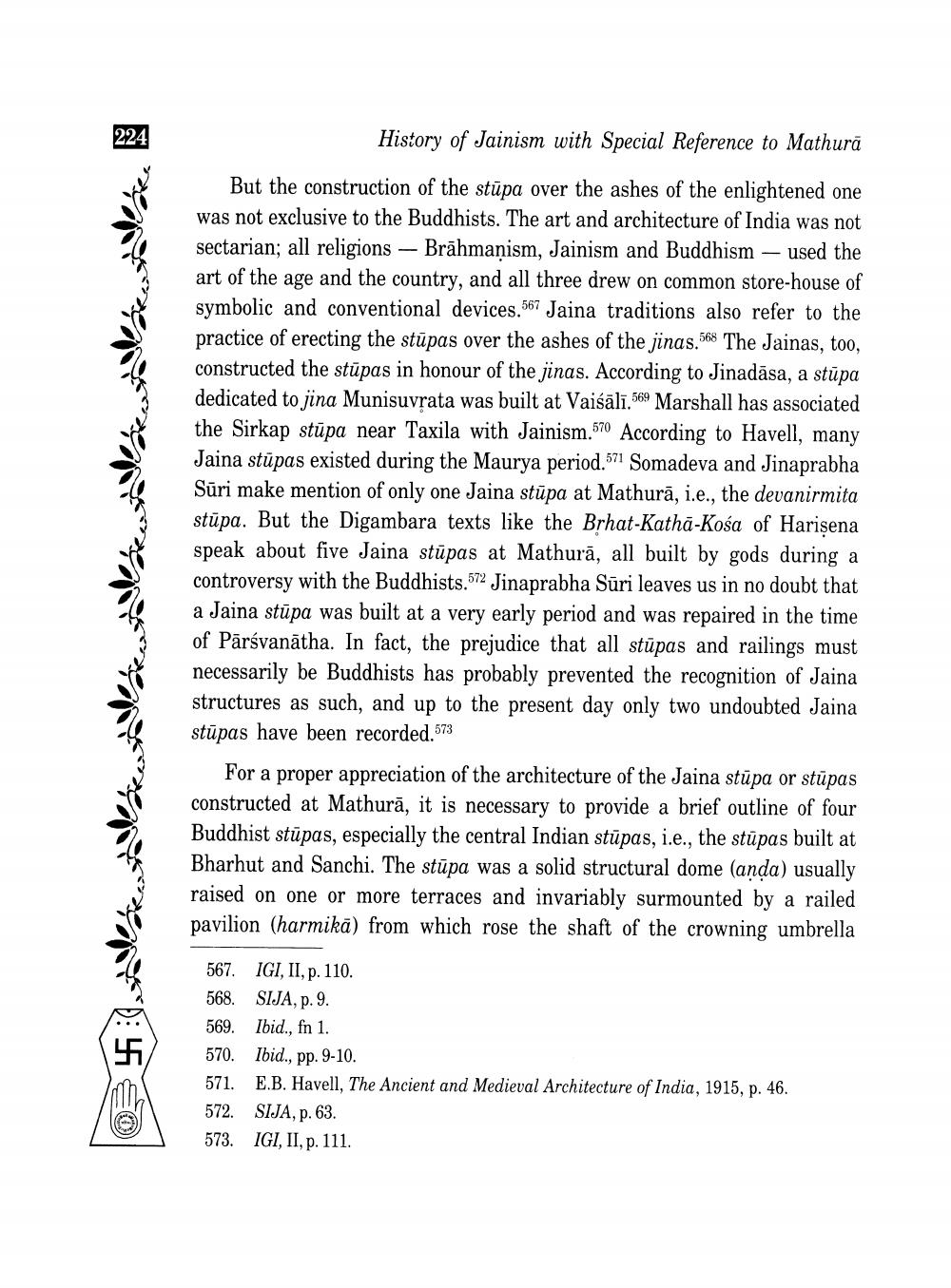________________
224
History of Jainism with Special Reference to Mathurā
But the construction of the stūpa over the ashes of the enlightened one was not exclusive to the Buddhists. The art and architecture of India was not sectarian; all religions - Brāhmanism, Jainism and Buddhism - used the art of the age and the country, and all three drew on common store-house of symbolic and conventional devices. 567 Jaina traditions also refer to the practice of erecting the stūpas over the ashes of the jinas.568 The Jainas, too, constructed the stūpas in honour of the jinas. According to Jinadāsa, a stūpa dedicated to jina Munisuvrata was built at Vaisālī.569 Marshall has associated the Sirkap stūpa near Taxila with Jainism.570 According to Havell, many Jaina stūpas existed during the Maurya period.571 Somadeva and Jinaprabha Sūri make mention of only one Jaina stūpa at Mathurā, i.e., the devanirmita stūpa. But the Digambara texts like the Brhat-Kathā-Kośa of Harisena speak about five Jaina stūpas at Mathurā, all built by gods during a controversy with the Buddhists.572 Jinaprabha Sūri leaves us in no doubt that a Jaina stūpa was built at a very early period and was repaired in the time of Pārsvanātha. In fact, the prejudice that all stūpas and railings must necessarily be Buddhists has probably prevented the recognition of Jaina structures as such, and up to the present day only two undoubted Jaina stūpas have been recorded. 573
For a proper appreciation of the architecture of the Jaina stūpa or stūpas constructed at Mathurā, it is necessary to provide a brief outline of four Buddhist stūpas, especially the central Indian stūpas, i.e., the stūpas built at Bharhut and Sanchi. The stūpa was a solid structural dome (anda) usually raised on one or more terraces and invariably surmounted by a railed pavilion (harmikā) from which rose the shaft of the crowning umbrella
567. IGI, II, p. 110. 568. SIJA, p. 9. 569. Ibid., fn 1. 570. Ibid., pp. 9-10. 571. E.B. Havell, The Ancient and Medieval Architecture of India, 1915, p. 46. 572. SIJA, p. 63. 573. IGI, II, p. 111.




